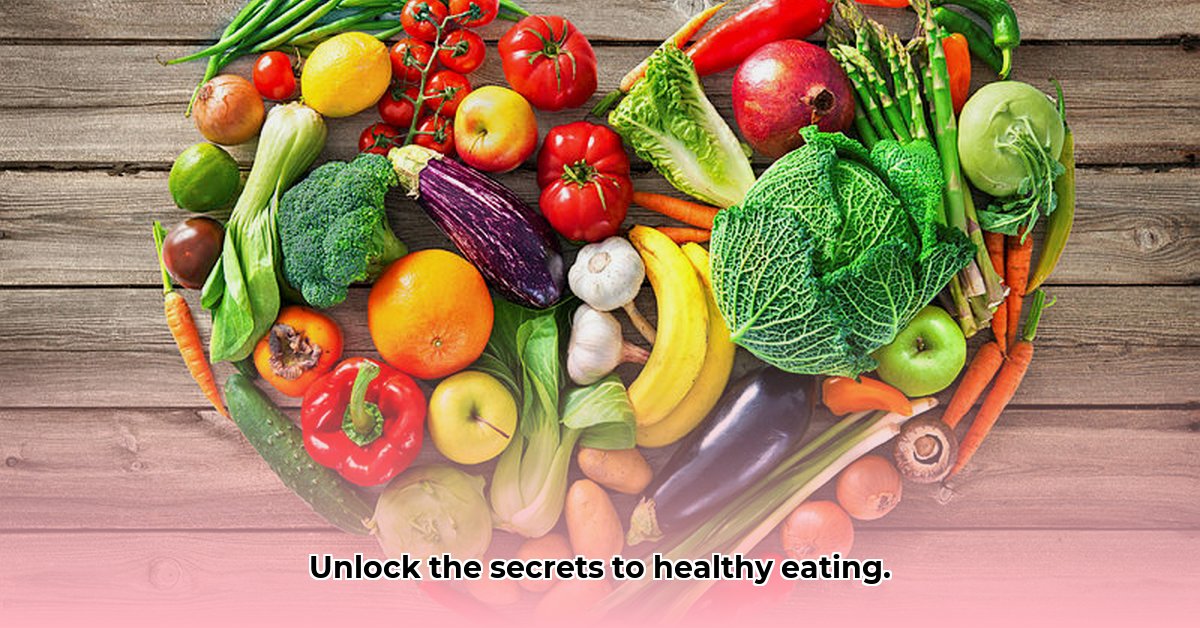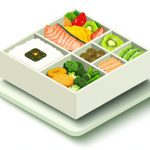Feeling overwhelmed by conflicting diet advice and endless images of “perfect” meals? You’re not alone! This guide cuts through the noise and provides a simple, sustainable path to healthy eating. We’ll explore popular approaches like plant-forward meals and mindful eating. For more inspiration, check out these healthy eating photos. Get ready to transform your relationship with food!
Decoding the Visual Landscape of Nutrition
We are constantly bombarded with food visuals. But how many represent truly healthy choices? Here’s how to navigate the image-driven world of food and make informed decisions that nourish your body and mind.
Beyond the Pretty Pictures: What Healthy Eating Really Means
Glossy magazines and food blogs often showcase vibrantly colored fruits, vegetables, lean proteins, and whole grains, representing generally healthy options. The USDA Dietary Guidelines offer comprehensive information on balanced eating, while organizations like the American Heart Association provide guidance on heart-healthy food choices.
However, the definition of “healthy eating” is constantly evolving. Plant-forward eating is booming, reflecting concerns about the environment and animal welfare. Personalized nutrition recognizes that a one-size-fits-all approach is ineffective, meaning images should be considered within the context of individual needs.
The Challenges: Unraveling Conflicting Messages
Pictures of healthy meals often project an image of effortless perfection, but the truth is more complicated. Constant conflicting information makes it difficult to discern genuinely reliable advice. Food companies use marketing and images to sell products that aren’t as healthy as they claim, creating a “health halo.” Navigating this requires critical thinking and informed decision-making.
Actionable Steps: Cultivating a Healthier Relationship with Food
Successful healthy eating is about progress, one step at a time, and creating lasting changes.
Step 1: Become a Smarter Shopper:
- Read Nutrition Labels Carefully: Pay attention to serving sizes, calories, macronutrients (protein, carbohydrates, fats), and micronutrients (vitamins, minerals). Focus on limiting added sugars, saturated and trans fats, and sodium.
- Understand the Ingredient List: The ingredients are listed in descending order by weight. Look for whole, recognizable ingredients at the top of the list.
- Compare Similar Products: Don’t just grab the first item you see. Check the nutrition labels and ingredient lists of different brands to make the healthiest choice.
- Beware of Misleading Packaging: Don’t be swayed by enticing images or health claims. Critically evaluate packaging to determine if it accurately reflects the product’s nutritional value.
Step 2: Become Kitchen Confident:
- Cook at Home More Often: Home cooking allows you to control ingredients and portions, leading to healthier meals.
- Start with Simple Recipes: Don’t feel like you need to be a gourmet chef. Master a few basic, healthy recipes and gradually expand your repertoire as your confidence grows. Use online resources like BBC Good Food or the Mayo Clinic Healthy Recipes for inspiration.
- Plan Your Meals: Planning helps you make healthier choices and avoid impulsive takeout orders.
- Batch Cook: Prepare meals in advance to save time and ensure you have healthy options available throughout the week.
Step 3: Practice Mindful Eating:
- Pay Attention to Your Body’s Cues: Eat when you’re truly hungry and stop when you’re satisfied, not stuffed.
- Eliminate Distractions: Turn off the TV, put away your phone, and focus on your food.
- Savor Each Bite: Eat slowly and appreciate the flavors and textures of your food.
- Chew Thoroughly: Proper chewing aids digestion and helps you feel full faster.
Step 4: Learn to Decipher the Visuals:
- Be Critical of Online Images: Does the image realistically represent a balanced meal with believable portion sizes?
- Cross-Reference Visuals: Compare visuals with trustworthy sources of nutritional information from reputable organizations like the Academy of Nutrition and Dietetics.
- Focus on Real Food: Prioritize images that showcase whole, unprocessed foods over highly stylized or overly processed meals.
The Future of Healthy Eating: A Holistic View
The future of healthy eating integrates environmental sustainability, ethical considerations, and personalized needs. Visuals will reflect plant-forward options, sustainable food systems, and personalized dietary plans, with more honest images focused on accessibility and less on perfection.
Tips for Creating Inspiring Food Photography
| Tip | Description |
|---|---|
| Natural Lighting | Use natural light for vibrant and appealing photos. Avoid harsh direct sunlight, which can create shadows. |
| Simple Backgrounds | A clean, uncluttered background lets the food be the star. Use neutral colors or textures. |
| Colorful Food Styling | Arrange food attractively; color is key to visual appeal. Use fresh herbs and spices as garnishes. |
| Tell a Story | Create a narrative with your photos – a nourishing breakfast before a workout, for example. |
| Authentic Presentation | Avoid overly stylized or unrealistic presentations. Keep it real! Show imperfections and natural textures. |
Remember that images of healthy eating should inspire, not intimidate! Focus on enjoyable, sustainable changes to your diet, viewing it as a journey, not a race.
How to Overcome Conflicting Dietary Advice and Choose a Truly Healthy Eating Plan
Key Takeaways:
- Embrace gradual changes for sustained success; avoid drastic overhauls.
- Tailor your approach; individual needs dictate optimal choices.
- Prioritize whole, unprocessed foods for maximum nutrition.
- Address emotional factors influencing eating patterns.
- Consult healthcare providers and registered dietitians for personalized advice.
- Supplement healthy eating with regular physical activity.
Current Trends Shaping the Modern Diet
The field of healthy eating continuously evolves with trends emphasizing plant-based diets for health, environmental, and ethical reasons. Sustainability in food choices, considering food miles and eco-friendly practices, gains traction. Personalized nutrition, tailoring diets to individual needs, emerges as a key approach. Intermittent fasting and the ketogenic diet are also popular, though their long-term effects are still being studied.
The Challenges of Conflicting Dietary Advice in the Media
Navigating nutrition is confusing due to bombardment by conflicting sources and marketing exaggerations, making it tough to differentiate reliable advice. Consider that the FDA regulates food labeling, but marketing claims can still be misleading.
Debunking Common Myths About Health Foods
Let’s address misconceptions, like eliminating entire food groups for health or that fad diets lead to sustainable weight loss. A balanced diet with nutrient-rich foods is key. For example, gluten-free diets are necessary for individuals with celiac disease, but offer no proven benefits for those without the condition.
Actionable Steps to a Healthier Diet and Lifestyle
Create a healthy eating plan through these steps:
- Set Realistic Goals: Initiate manageable changes like adding one serving of fruits or vegetables daily.
- Prioritize Whole Foods: Choose fruits, vegetables, whole grains, and lean proteins for essential nutrients.
- Limit Processed Foods and Added Sugars: Reducing intake boosts health due to lower caloric density and improved satiety (feeling full).
- Practice Mindful Eating: Eating slowly and savoring food without distractions increases awareness of hunger and fullness cues.
- Seek Professional Guidance: Consult registered dietitians for tailored recommendations.
- Don’t Forget Exercise: Engage in physical activity for at least 30 minutes most days of the week to complement diet and promote well-being. The Physical Activity Guidelines for Americans provide detailed recommendations.
Addressing Psychological Factors Impacting Dietary Health
Emotional eating and stress significantly impact dietary choices. Seek support from therapists or counselors or use stress management techniques like mindfulness or yoga to address these psychological factors in choosing a healthy eating plan. Cognitive Behavioral Therapy (CBT) can be a helpful tool for managing emotional eating.
Creating a Sustainable Plan for Balanced Eating
Consistency is key and a healthy eating plan isn’t a quick fix, so make gradual and sustainable changes you can maintain long-term. Find what works best for you, experimenting and adjusting as needed.
Plant-Forward Eating, Sustainability, and Personalized Nutrition: A Comparative Guide
Key Takeaways:
- Transitioning to plant-forward diets reduces environmental impact across greenhouse gas emissions and land use.
- Whole plant foods offer superior nutrition, with alternatives improving accessibility.
- Strictly vegan diets can lead to nutritional deficiencies, requiring careful planning.
- Further investigation is needed on the economic impacts of plant-based diet adoption.
- Balancing whole foods with alternatives optimizes sustainability and nutritional adequacy.
- Sustainable food systems addressing both production and consumption, is a holistic solution.
- Government policies and consumer choices are crucial for promoting sustainable diets.
Understanding the Environmental Impact of Dietary Changes
Plant-forward eating is kinder to our Earth, showing a reduction in greenhouse gas emissions, land use, and water consumption. Raising livestock requires far more resources than growing plant-based foods. This approach also sparks discussion about vegan, vegetarian, or flexitarian eating patterns.
Nutritional Considerations: Whole Foods vs. Plant-Based Alternatives (PBAs)
Whole plant foods (fruits, vegetables, legumes, and whole grains) pack a nutritional punch, while plant-based alternatives (veggie burgers/milks)
- The Best Bento Box Price For Your Perfect Packed Lunch - December 15, 2025
- Bento Box Shopping Tips for Smart and Stylish Lunch Prep - December 14, 2025
- Bento Box Trays Streamline Restaurant Meal Presentation and Transport - December 13, 2025










